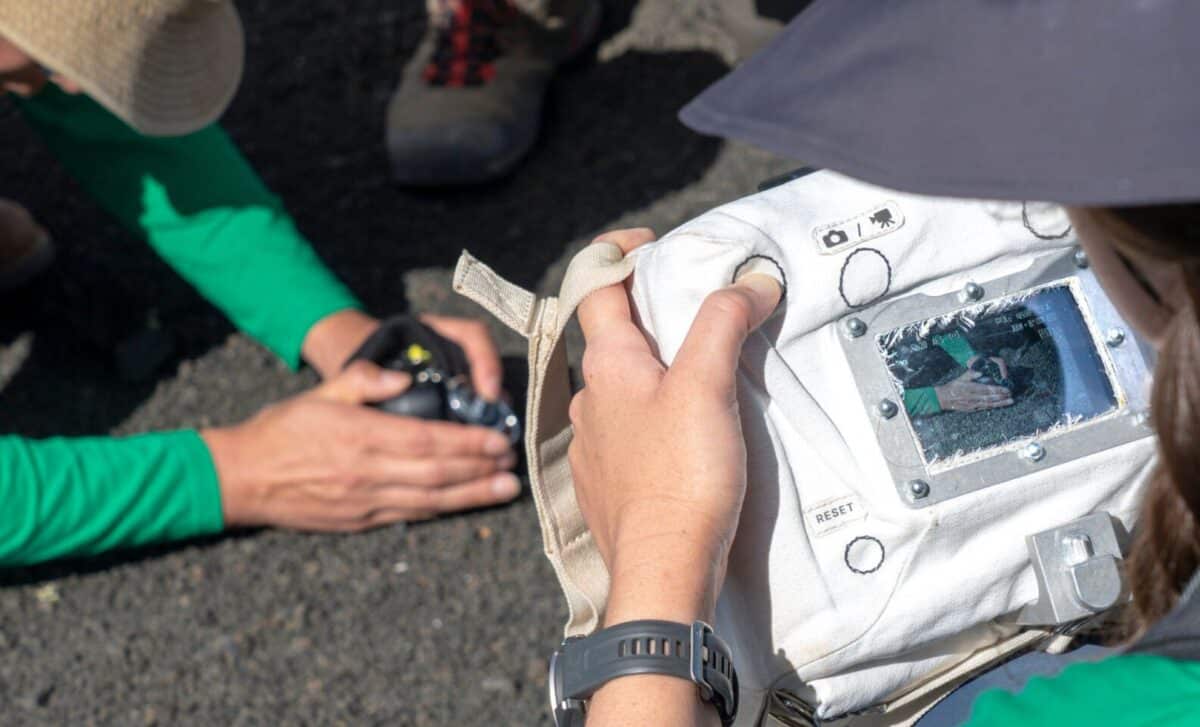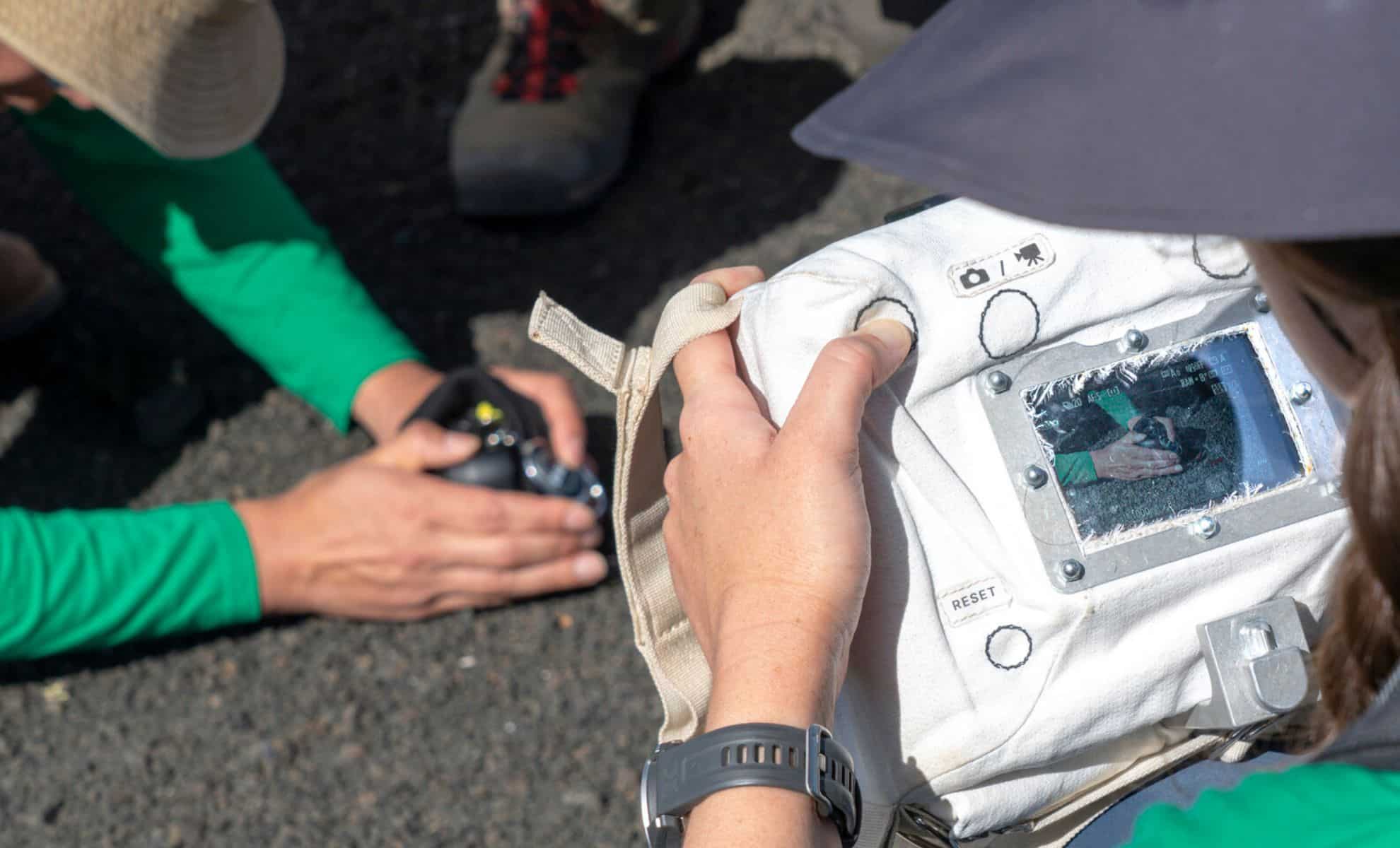ESA has tested a cutting-edge lunar camera designed for NASA’s upcoming Artemis missions during the PANGAEA geology training in Lanzarote. The Handheld Universal Lunar Camera (HULC), equipped to withstand the Moon’s extreme conditions, aims to capture high-detail images of the lunar surface, even in low-light environments.
ESA Tests Advanced Lunar Camera for Future Artemis Missions

As preparations for NASA's ambitious Artemis lunar missions move forward, the European Space Agency (ESA) has taken an important step by testing the Handheld Universal Lunar Camera (HULC) during their PANGAEA geology training.
This innovative camera, specifically designed for lunar exploration, aims to play a vital role in documenting the Moon's surface and aiding astronauts in their exploration tasks. The training, which took place in Lanzarote, Spain, simulated the rugged and extreme environments astronauts will face on the lunar surface, providing valuable insights into how the camera will perform during real missions.
Building a Camera for the Moon’s Harsh Environment
The design of the HULC camera reflects the unique challenges of operating on the Moon. Unlike Earth, the Moon's environment is characterized by extreme temperature variations and lack of atmosphere, which presents significant hurdles for any equipment deployed there. The HULC camera, based on a modified Nikon model, has been equipped with a thermal blanket developed by NASA to protect it from the severe temperature fluctuations, which can range from minus 200 to 120 degrees Celsius. This thermal protection is crucial, especially given that the camera will be used near the lunar South Pole, where the Artemis III mission is expected to land, and where large areas are in permanent shadow.
Beyond thermal protection, the camera's buttons and controls have been re-engineered to be usable by astronauts wearing thick, bulky gloves. This ergonomic redesign allows astronauts to operate the camera effectively during moonwalks, ensuring that key moments of exploration can be documented without fumbling or delays. Jeremy Myers, the lead for the HULC project at NASA, explained that these adjustments are critical to making the camera not just functional but intuitive for astronauts. "Inputs from the trainees help us refine the ergonomics and redundancy of the camera to make missions as productive as possible," Myers noted, underscoring the importance of astronaut feedback in refining the camera’s design.
Testing in Realistic Lunar-Like Conditions
The PANGAEA training provided an ideal setting for testing the HULC camera in conditions that closely mimic the lunar environment. Astronauts Rosemary Coogan (ESA), Arnaud Prost, and Norishige Kanai (JAXA) participated in the testing, taking the camera into volcanic caves and other rugged terrains that simulate the Moon's surface. The training allowed the camera's telephoto lenses, flash settings, and other features to be tested in low-light environments, as well as in areas with high contrast between shadowed and sunlit regions—conditions that astronauts will encounter near the lunar South Pole.
One of the key features tested during the training was the 200 mm telephoto lens, which allows astronauts to capture high-detail images from long distances. This capability is crucial for lunar exploration, where astronauts may need to assess distant geological features before deciding where to explore further. Myers highlighted the camera's performance during these tests, stating, "The camera captured a great amount of detail from a distance, something that would exceed anything that had ever been seen before on the Moon. This trial was a fantastic starting point to evaluate the level of detail future explorers could get from the camera."
Overcoming the Challenges of Low-Light Lunar Environments
The Moon’s South Pole, where the Artemis III mission is set to land, is characterized by permanently shadowed craters that never receive direct sunlight. This presents a major challenge for capturing clear images. To address this, the HULC camera was designed to perform well in low-light conditions. During the PANGAEA tests, astronauts took images inside dark caves in Lanzarote to simulate these shadowed lunar environments. The camera’s flash settings were also put to the test, proving essential for illuminating dark areas where sunlight cannot reach.

The performance of the flash system and its ability to work seamlessly with the telephoto lens provided promising results. Myers emphasized the importance of these tests, noting that "we used a flash for the first time in a lava tube with Norishige Kanai, who has been to the International Space Station and was familiar with the challenges of taking pictures during spacewalks." These low-light tests are critical, as clear, detailed images are necessary for both scientific documentation and navigation on the Moon’s surface.
Addressing Usability in Space Suits
Operating equipment in the harsh conditions of space is complicated by the fact that astronauts must wear bulky space suits. This makes the usability of tools like the HULC camera a key concern. To ensure that astronauts can operate the camera effectively, even while wearing thick gloves, the camera’s buttons and controls have been carefully redesigned. Additionally, during the training, astronauts tested an eyepiece as an alternative to the camera’s back screen. This addition was particularly useful in scenarios where using a screen would be impractical due to glare or the limited mobility imposed by a space suit.
The feedback provided by the astronauts during these tests was instrumental in refining the camera's design. "The human factor is always the most important when developing tools for space exploration," said Myers. He added that the insights from the astronauts allowed the team to improve the camera’s ergonomics, ensuring that it would be easy to handle during moonwalks.
Communication and Bandwidth Challenges
One of the critical challenges during lunar exploration will be maintaining clear communication between astronauts on the surface and mission control on Earth. The PANGAEA training simulated potential communication issues, including signal loss, which could be expected during real lunar missions. Astronauts tested the camera’s ability to select and transmit specific images back to mission control when full data transmission wasn’t possible. This selective transmission feature is essential for prioritizing key images when bandwidth is limited.
Myers reflected on the importance of these tests, stating, "We spent a lot of time in the lab with the camera, thinking about what the challenges could be, but only when we test it in a realistic scenario, can we broaden our perspective and improve the design." These real-world trials are crucial to ensuring that the HULC camera can function optimally under the challenging conditions of the Moon, where quick decisions about which images to send back to Earth could make a significant difference.
Paving the Way for Artemis III and Beyond
As NASA and ESA prepare for the Artemis III mission, the HULC camera is poised to become an indispensable tool for astronauts on the Moon. The camera’s ability to operate in extreme temperatures, capture detailed images in low-light environments, and adapt to the limitations of astronauts wearing space suits makes it a crucial piece of equipment for future lunar exploration.
As part of ongoing preparation, the Artemis crew will continue to test training units of the camera in 2025. The lessons learned from these tests will inform further refinements, ensuring that the camera is fully optimized by the time it is deployed on the lunar surface.
Ultimately, the goal of these efforts is to equip astronauts with the best possible tools for exploring and documenting the Moon, contributing to a deeper understanding of lunar geology and enabling the success of NASA’s ambitious goals for the Artemis program. "At the end of the day, we all want to end up with the best product—a space-rated camera that will capture amazing Moon pictures for humankind," Myers concluded, reflecting on the collaborative nature of the development process.



